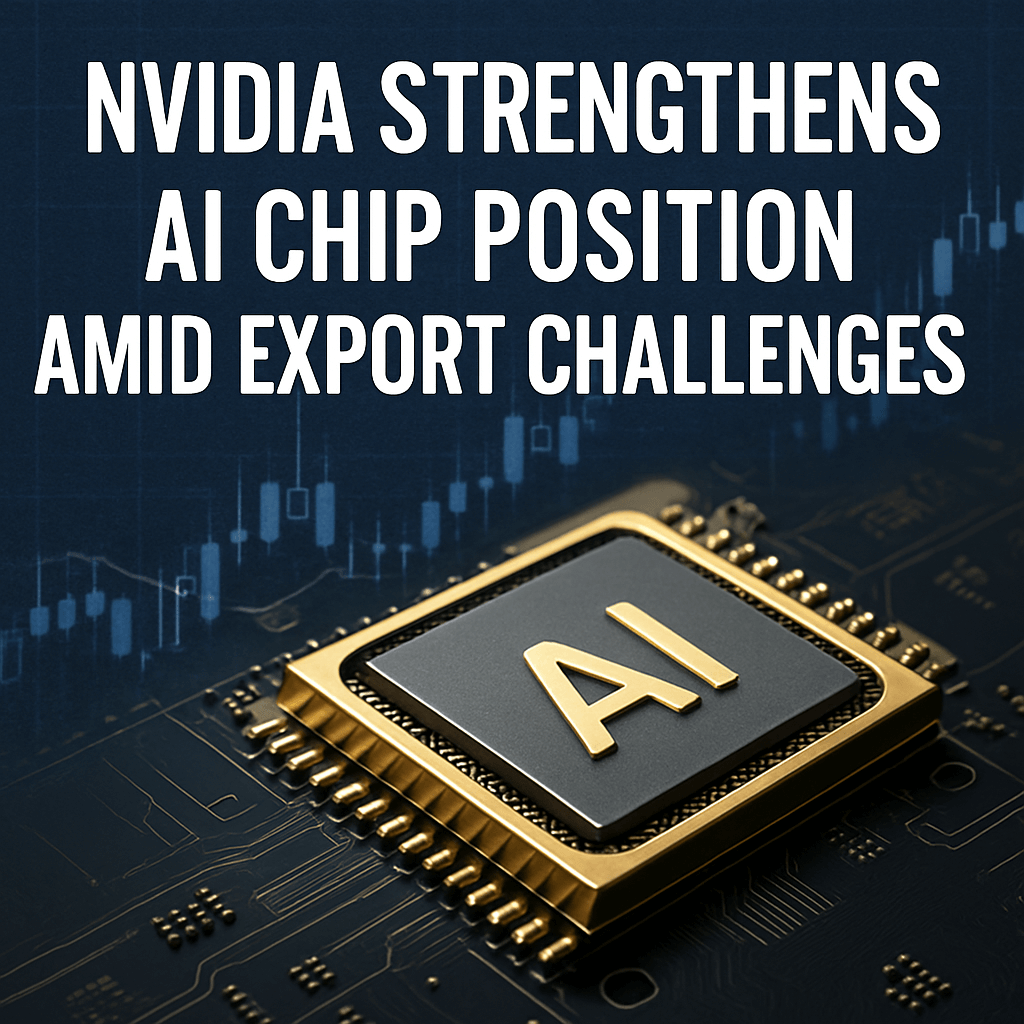Nvidia Strengthens AI Chip Position Amid Export Challenges

Nvidia’s latest quarterly report underscores its commanding position in the AI accelerator market even as new U.S. export restrictions and margin pressures temper near-term profitability. Advanced technical innovation, robust demand from hyperscalers and sovereign wealth funds, and strategic guidance for upcoming product launches position Nvidia at the forefront of the AI revolution.
Strong Q2 Revenue Growth Amid AI Demand
For the quarter ending April 27, Nvidia reported revenue of $44.1 billion, a 69% year-over-year increase that beat consensus estimates of $43.2 billion. Data Center sales, driven primarily by H100 and A100 GPUs, fueled most of the growth, accounting for nearly 80% of total revenue. In particular, sales of Hopper- and Ampere-architecture accelerators to cloud service providers and enterprise AI outfits jumped by over 75% compared with a year earlier.
Margin Pressures from U.S. Export Controls
Net income fell to $18.8 billion from $22 billion last quarter, with diluted earnings per share declining to $0.76 from $0.89. Gross margins contracted to 60%, down from 65% the prior quarter. Nvidia CFO Colette Kress attributed the margin decline to a $4.5 billion reserve for inventory and purchase obligations tied to H20 chips, which are now subject to new Bureau of Industry and Security (BIS) license requirements under the U.S. Export Administration Regulations (EAR).
“Losing access to the China AI accelerator market, which we believe will grow to nearly $50 billion, would have a material adverse impact on our business going forward and benefit our foreign competitors worldwide,”
That charge follows approximately $15 billion in sales lost to earlier export curbs on A100 and H100 shipments. Nvidia now expects another $8 billion hit to H20 revenue in the current quarter. Management guided Q3 sales to roughly $45 billion versus Wall Street’s $46 billion consensus, forecasting modest sequential growth across all platforms.
Blackwell Architecture: Technical Deep Dive
Nvidia’s next-generation Blackwell GPUs, set to enter volume production later this year, promise substantial performance and efficiency improvements for large-scale training and inference:
- Process Node: Built on TSMC’s 5 nm N5P platform with high-density standard cells to boost die yield.
- Compute Units: Over 200 billion transistors, 20 000+ CUDA cores, and fourth-generation Tensor Cores optimized for FP8, INT4, and mixed-precision workloads.
- Memory Subsystem: 1 TB/s HBM3e bandwidth across a 6144-bit interface; on-die ECC for improved reliability at scale.
- Interconnect: NVLink 4.0 with 1.2 TB/s bi-directional throughput and PCIe Gen5/CXL 2.0 for host interconnect.
- Energy Efficiency: 2× performance-per-watt improvement over Hopper, targeting sub-300 W TDP for multi-GPU configurations.
Competitive Landscape and Industry Implications
While Nvidia retains an estimated 80% share of the high-end AI accelerator market, competitors are ramping up their offerings:
- AMD: MI300X liquid-cooled chiplet design leverages CDNA 3 cores and on-package Infinity Cache to challenge Nvidia in HPC and AI.
- Intel: Gaudi 2 accelerators optimized for transformer-based models, backed by Habana Labs expertise.
- Hyperscaler Custom Chips: Google’s TPU v5 and Amazon’s Graviton AI engines aim to reduce reliance on third-party GPUs.
- China’s Domestic Players: Firms like Biren and Huawei are developing in-house AI SoCs to circumvent export limitations.
These competitive dynamics are driving hyperscalers and enterprise AI customers to diversify their accelerator stacks, even as many remain dependent on Nvidia’s mature software ecosystem and CUDA-optimized frameworks.
Geopolitical and Trade Environment
The U.S. Commerce Department’s April expansion of export controls extended BIS license requirements to all AI chips built on <600 mm² dies or using <16 nm technology destined for China and Russia. The regulations, modeled on the Wassenaar Arrangement and backed by multilateral consensus, aim to slow adversary AI development but risk ceding market share to non-U.S. suppliers.
The ongoing judicial challenge to President Trump’s tariff program—recently struck down by the U.S. Court of International Trade for exceeding IEEPA authority—adds further uncertainty. Meanwhile, the EU is discussing parallel chip export restrictions, and Japan has tightened shipments of semiconductor manufacturing equipment to China, intensifying a complex supply-chain realignment.
Wedbush Bullish View and Market Impact
Wedbush Securities analysts remain upbeat on Nvidia, citing sustained orders from Middle Eastern sovereign wealth funds and emerging AI-focused data centers in APAC.“There is one chip in the world fueling the AI revolution and it’s Nvidia,” they wrote, highlighting CEO Jensen Huang’s bullish commentary on accelerating AI adoption across industries.
Natalie Hwang, founding managing partner of Aperia Capital, notes that Nvidia’s performance will guide capital allocation across semiconductors, cloud infrastructure, and applied AI: “As trade policies shift and tariff concerns persist, Nvidia’s results serve as a critical benchmark for tech investment strategies.”
Forward Guidance and Outlook
Looking ahead, Nvidia anticipates Data Center revenue growth to resume once Blackwell production ramps in late 2024, with margins rebounding toward the low-70% range by fiscal 2025. Key risk factors include the pace of TSMC capacity expansion, potential new export curbs on upstream packaging technology, and intensifying competition from established and emerging AI chip vendors.
Investors and industry observers will be closely monitoring Nvidia’s execution on Blackwell ramp-up, software ecosystem enhancements (including CUDA 13 and Triton Inference Server), and its ability to navigate an evolving geopolitical landscape while preserving leadership in high-performance AI computing.